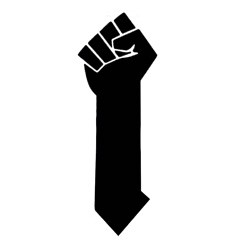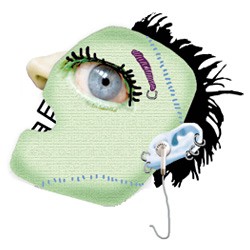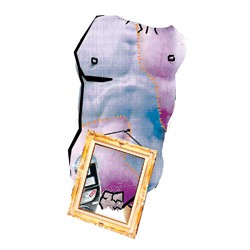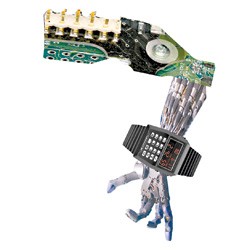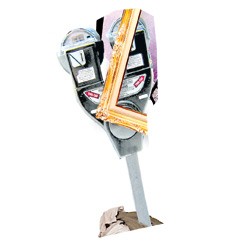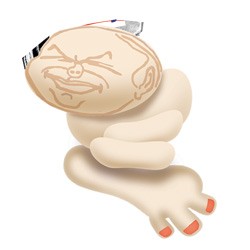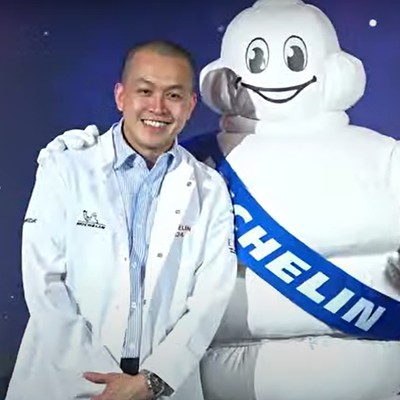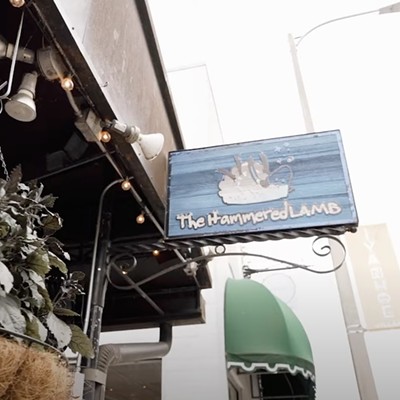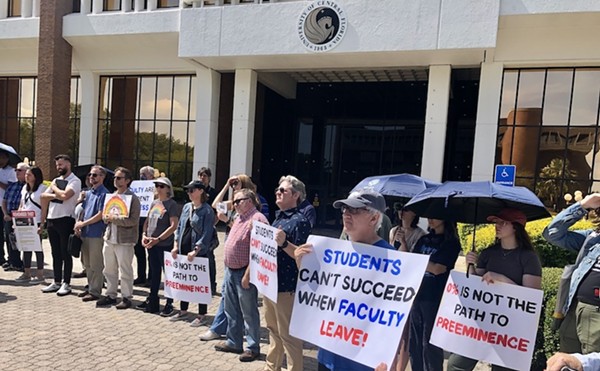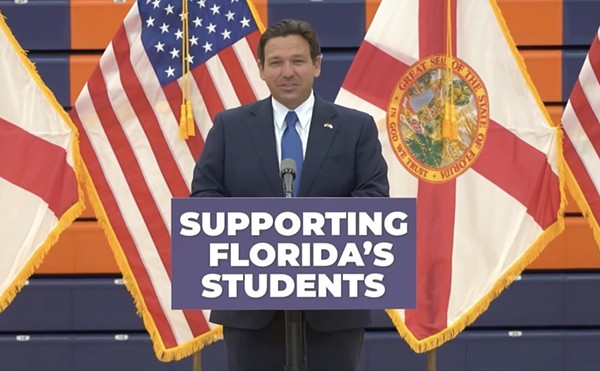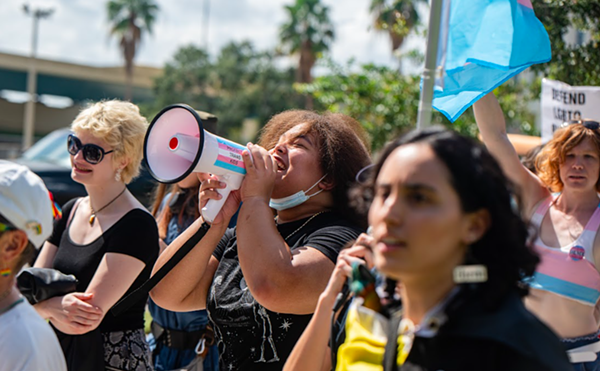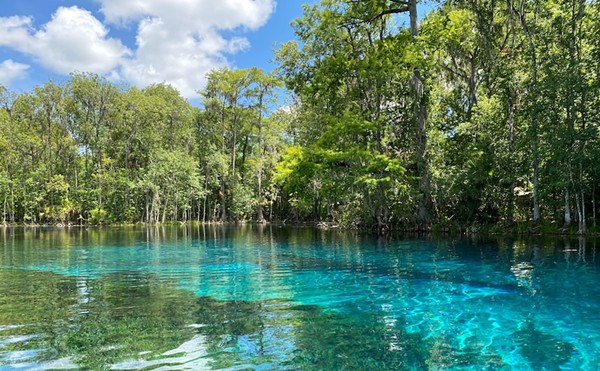When Orlando Mayor Buddy Dyer first uttered his 'live, work and play' mantra early in his tenure to describe cultural connectivity specific to the city's downtown core, he probably didn't have this in mind. A typical Tuesday lunchtime sampling of the Orange Avenue thoroughfare produces little evidence of a socioeconomic experiment gone right: A smattering of foot traffic, largely consisting of starched shirts in slow motion, wilts in the summer sun; entire blocks boast advertising boards reading 'For Lease'; a sun-bleached sign dangles from the side of the 36-story condominium complex The VUE condo downtown at Lake Eola, which peddles 'the luxurious life' to precisely no one, save the few patrons of LaBelle Furs — an elitist anomaly established in 1919 — who are still kicking their pomp around.
As the sun sets, the scene doesn't change too much. The once-booming Church Street is a ghost of its former self. Several bars punctuating the main drag heave with the high-fives of the monochrome set, floppy-haired rockers tuck themselves into the corners of stage-bearing venues and wait for a 'scene' to rekindle. It's not so much a melting pot as it is a hodge-podge — a perplexingly dull manifestation of an obsessively manicured urbanity.
Blame it on the recession if you must, but the city of Orlando has taken pains for years to transform its downtown into a 'world-class' attraction. Even as the promise of a new $480 million arena looms on the horizon, even with the requisite build-it-they-will-come boosterism rising in the back of civic-minded throats, the real sense that anything will come of it — that downtown Orlando will come back to life — is nowhere to be found. Why? Because where once the relative danger of being approached by a pierced kid with blue hair or a homeless person's barely lucid financial plea made the Orange Avenue crawl that much more unpredictable, the city has effectively whitewashed, code-enforced, litigated and priced all vestiges of variety out of its precious downtown. That 'live, work and play' manifesto was never intended to apply to everyone — just to those condo-dwellers, realtors and lawyers who could afford (or at least pretend to afford) the cost of admission.
Dyer and his finger-wagging predecessor, Glenda Hood, have been willing alchemists in the city's social-engineering laboratory, throwing good money after bad, disposing of compassion whenever convenient and converting culture into commerce for the sake of appearances. What they've created is an immaculate ideal that resembles neither you nor us, a sewn-together patchwork of mistakes and inconsistencies written large in downtown's empty spaces and faces. What they've made is a monster.
Blackout
Forever a blight on the city's downtown vision, the renovation of the predominantly black Parramore area just west of downtown remains a slow crawl despite the city's posturing. The Parramore Kidz Zone has been linked to an 80-percent decline in juvenile crime in the area, some houses are being built (just as some are being foreclosed upon) and parks are opening. But gentrification without the appearance of gentrification — via the city's Pathways for Parramore program — has led the city into nefarious ethics territory, specifically through the dealings of longtime city commissioner Daisy Lynum who sits on the board of the questionable Black Business Investment Fund of Central Florida. The BBIF notoriously fumbled a deal in 2004 in which the city would have effectively handed land over to a developer at a cost of $2.5 million to taxpayers. Other notable redevelopment plans — the Afashee Theater at Carver Square, the City View mixed-use development on Church Street — have either failed to materialize or to meet expectations. In 2007, Dyer announced that basketball hero Magic Johnson would throw $70 million into Parramore redevelopment. That magic never happened.
Now the city is placing its bets on the new Amway Center leading regional economic recovery. That won't happen either.
Now the city is placing its bets on the new Amway Center leading regional economic recovery. That won't happen either.
Pretty Vacant
Like a sharp-edged ruler slapped across a homeroom wrist, former Orlando Mayor Glenda Hood smacked a Pleasantville postcard across Orange Avenue with a stack of ordinances addressing youth gone wild: Her 1993 crusade for a teen curfew and gripes against automotive 'cruising,' her 1997 rave crackdown that effectively killed Orlando's Rolling Stone-anointed status as a rave capitol, her 2000 moratorium (and later, cap) on the presence of tattoo studios. For a downtown that used to thrive on the organic growing pains of disenfranchisement — typically played out at clubs like Big Bang, the Go Lounge, Kit Kat Club, the Sapphire Supper Club and Harold & Maude's — the pressure proved too much. Yab Yum Inc. owners Barrie and Tommy Freeman soon bailed on their Wall Street empire, giving way to the muted barricades of today's blithely thematic Wall Street bars.
Today, even the retail establishments that used to give downtown a countercultural edge are gone. Punk-ish boutique Static and Cool World Traders were priced out of the city's center, and the city's most recent foray into the errant Ed Hardy-isms of today's city slickers, Forty VII Clothing owned by jock Jeff Faine of the Tampa Bay Buccaneers, boarded up its storefront in March. Even the Mini dealer moved. Cleanliness is next to emptiness.
Today, even the retail establishments that used to give downtown a countercultural edge are gone. Punk-ish boutique Static and Cool World Traders were priced out of the city's center, and the city's most recent foray into the errant Ed Hardy-isms of today's city slickers, Forty VII Clothing owned by jock Jeff Faine of the Tampa Bay Buccaneers, boarded up its storefront in March. Even the Mini dealer moved. Cleanliness is next to emptiness.
Artless Dodgers
It's all an illusion (not unlike the inscrutable Tower of Light public art piece, that $465,000 glass-pineapple configuration gracing the City Hall plaza) that the city has any grip on its cultural well-being. But to give the appearance of interest, the city established the Downtown Arts District Inc. in 2002, hoping to capitalize on the aesthetic sympathies of Orlando's citizens. What followed has been an impressionistic act of civic duty lacking artistic cohesion. DAD's crown jewel, the CityArts Factory, opened in 2006 to much hoopla and little substance, save the mortar dust of a hastily repurposed 1917 brick building. Sold as an incubator for local artistic talent, the building — which now boasts an embarrassing Mona Lisa tapestry at its front — has been diminished to a 20,000-square-foot boondoggle receiving millions from both city and county governments while suffering from a revolving door of underfunded ventures. It was supposed to be part of a bigger picture, but even that picture has been compromised.
The Dr. Phillips Center for the Performing Arts, the $383 million cherry on top of the save-the-day venues cake, last year effectively disposed of its local arts angle due to financial struggles, shed what was supposed to be the new home for the Orlando Philharmonic Orchestra and the Orlando Ballet (the Orlando Opera Company folded last year under the weight of the transition) and settled for an ill-suited $250 million oval-shaped Broadway theater for touring shows that will have to do for now.
The Dr. Phillips Center for the Performing Arts, the $383 million cherry on top of the save-the-day venues cake, last year effectively disposed of its local arts angle due to financial struggles, shed what was supposed to be the new home for the Orlando Philharmonic Orchestra and the Orlando Ballet (the Orlando Opera Company folded last year under the weight of the transition) and settled for an ill-suited $250 million oval-shaped Broadway theater for touring shows that will have to do for now.
Electric Dreams
Originally presented in 2006 as space-age antidote to the 'what's going to happen to the old Centroplex property when the new arena opens a few blocks south?' the Creative Village concept brought with it more questions than answers. The term 'creative class' was bandied about haphazardly, as was the notion that a Sim City adjacent to Parramore could operate 24/7, with creative people lining coffee-house sidewalks drawing caricatures on iPads. The whole idea hinged on the idea of UCF's Florida Interactive Entertainment Academy taking over the former convention center property and the growth that it would inspire. But just as Dyer was boasting in his Feb. 2006 State of the City speech that the adjacent downtown Marriott (now Sheraton) would be converted into dorms for the school, the hotel pulled out.
Re-envisioned through the computer magic of Thornton Park developer Craig Ustler (and backers Bank of America) the Creative Village now resembles a throbbing theme park replete with neon noise. Ustler and the city hope to squeeze $70 million from federal recovery grants to assist in its development; if that happens, they'll sell the 68-acre Creative Village in parcels and hope for the synthetic best: clean people with a lot of money.
Re-envisioned through the computer magic of Thornton Park developer Craig Ustler (and backers Bank of America) the Creative Village now resembles a throbbing theme park replete with neon noise. Ustler and the city hope to squeeze $70 million from federal recovery grants to assist in its development; if that happens, they'll sell the 68-acre Creative Village in parcels and hope for the synthetic best: clean people with a lot of money.
Parking Breaks
Early in his tenure, Dyer publicly envisioned a more accessible downtown, one with more places to park so that more foot traffic would populate the stagnant streets. But in just the last two years, parking rates downtown have doubled twice: first from $5 to $10, and just this June — with the new arena parking garages — to a whopping $20. The increases, or so goes the reasoning, would be required to pay off the upcoming debt service on the new garages. (An August Businesswire report showed that financiers Fitch just gave the city a coveted A-plus rating on its parking facilities bonds based on its 'rate-making flexibility.') The city also plans to regulate the lots adjacent to the arena that try to make money off of event parking; Commissioner Daisy Lynum called parking the city's 'bread and butter' at a recent city council meeting.
Amway or the Highway
Even though the city had financed a new arena to the tune of $110 million in 1989, in 2006, Mayor Dyer cratered to the wide-eyed demands of billionaire Orlando Magic owner — and shady Amway co-founder — Rich DeVos by agreeing to city financing for a brand new arena for the team. In order to make the deal more palatable to the public, the city instituted its Blueprint program as an assurance that minorities (specifically those from Parramore) would be employed by the $480 million construction project. As of April, some 370 locals got jobs with the project (a reported 60 percent were minorities), but due to the trickle-down nature of subcontracting, some minority businesses reported to be involved in the venture weren't there at all. With the arena opening in October, the ballooning costs of venue rental — and therefore tickets — are making the state-of-the-art facility too expensive for cash-strapped locals. Build it and who will come?
Even though the city had financed a new arena to the tune of $110 million in 1989, in 2006, Mayor Dyer cratered to the wide-eyed demands of billionaire Orlando Magic owner — and shady Amway co-founder — Rich DeVos by agreeing to city financing for a brand new arena for the team. In order to make the deal more palatable to the public, the city instituted its Blueprint program as an assurance that minorities (specifically those from Parramore) would be employed by the $480 million construction project. As of April, some 370 locals got jobs with the project (a reported 60 percent were minorities), but due to the trickle-down nature of subcontracting, some minority businesses reported to be involved in the venture weren't there at all. With the arena opening in October, the ballooning costs of venue rental — and therefore tickets — are making the state-of-the-art facility too expensive for cash-strapped locals. Build it and who will come?
Don't Feed the Animals
This city hates its poor. Under the Hood of the '90s, the city required downtown panhandlers to attain permits with which to operate their booming beggars' businesses — an act further complicated in 2000 when the city instituted a limited number of poorly demarcated 'blue boxes' downtown from which the indigent could panhandle. That landed the city in the top 20 of the National Coalition for the Homeless' meanest cities list. In 2007, under Dyer, the city amended the ordinance to stop the bogeymen from begging after dark. Sadly, that's not the biggest crime that city government has committed against its needy.
In a well-publicized act of degradation, the city passed a homeless-feeding ordinance in 2006 intended to quash weekly public feedings held by local activists in Lake Eola Park. Citing increased crime — something the city failed to substantiate when the American Civil Liberties Union jumped into the case with a 2006 lawsuit — the city insisted that public philanthropy was harming its image and scaring away nice people. A judge ruled against Orlando and its ordinance in 2008, but the city appealed (spending thousands of your tax dollars) and eventually won its case earlier this year.
In a well-publicized act of degradation, the city passed a homeless-feeding ordinance in 2006 intended to quash weekly public feedings held by local activists in Lake Eola Park. Citing increased crime — something the city failed to substantiate when the American Civil Liberties Union jumped into the case with a 2006 lawsuit — the city insisted that public philanthropy was harming its image and scaring away nice people. A judge ruled against Orlando and its ordinance in 2008, but the city appealed (spending thousands of your tax dollars) and eventually won its case earlier this year.
Sleeping With the Enemies
Of all of its potential crimes the city's poor judgment in choosing fiscal bedfellows ranks among the worst. First, there was Lou Pearlman, the boy-band svengali who promised to transform Church Street into a musical nightmare reminiscent of MTV's TRL show. The city fronted Pearlman $1.5 million in incentives for the renovation; years later, Pearlman went bankrupt and then went to jail based on federal charges involving a $317 million investment scheme. The city then jumped into bed with developer Cameron Kuhn, who picked up the Church Street property for $34 million from the Pearlman bankruptcy auction (only to lose the property in his own bankruptcy proceedings). Kuhn managed to buy a number of properties lining Orange Avenue, many of which are still boarded up. In 2008, Kuhn defaulted on $56 million in loans and walked away with at least $3.5 million in city-funded incentives.
Though he was able to finish the construction of the Plaza downtown, Kuhn never managed to fulfill the mayor's greatest dream: a downtown movie theater. For that task, the city turned to another historied fraud, James T. Duffy, to whom it offered $6 million up front in hopes of regaining $1.1 million in interest. Though the 12-screen Plaza Cinema Café closed last Christmas when Duffy was evicted for not paying the rent, the theater quickly reopened and remains open today under questionable — and malodorous — circumstances. As of yet, it hasn't saved downtown.
[email protected]
